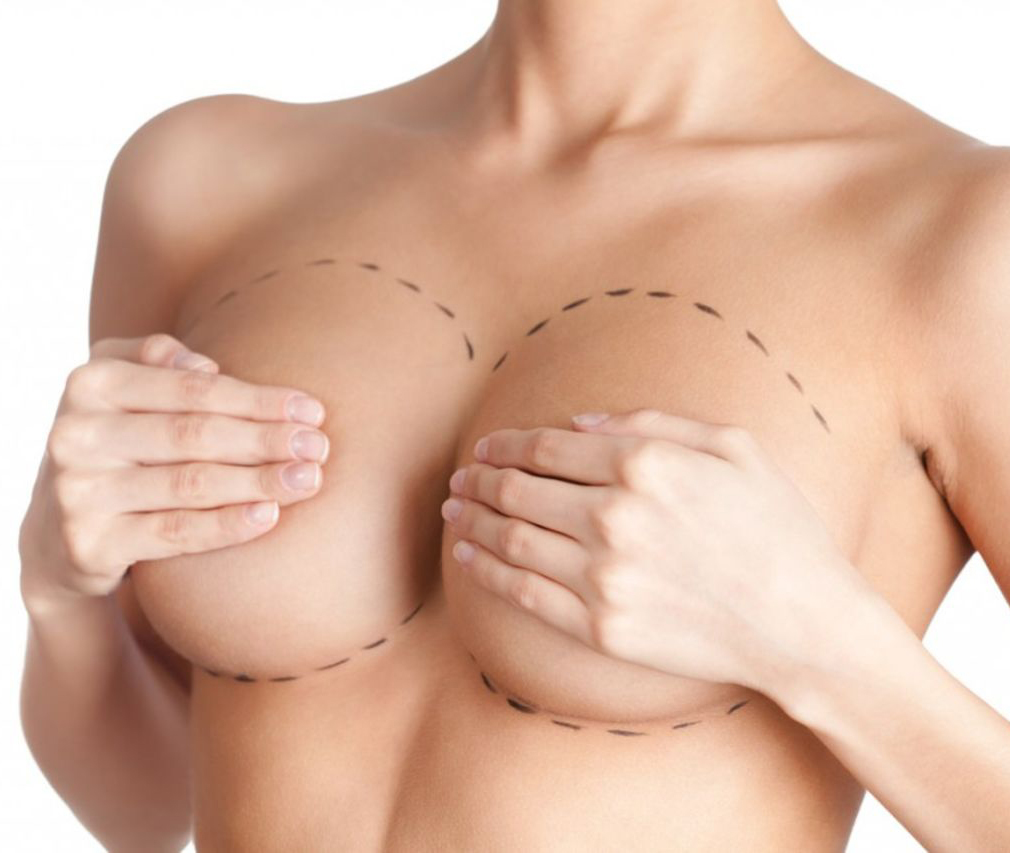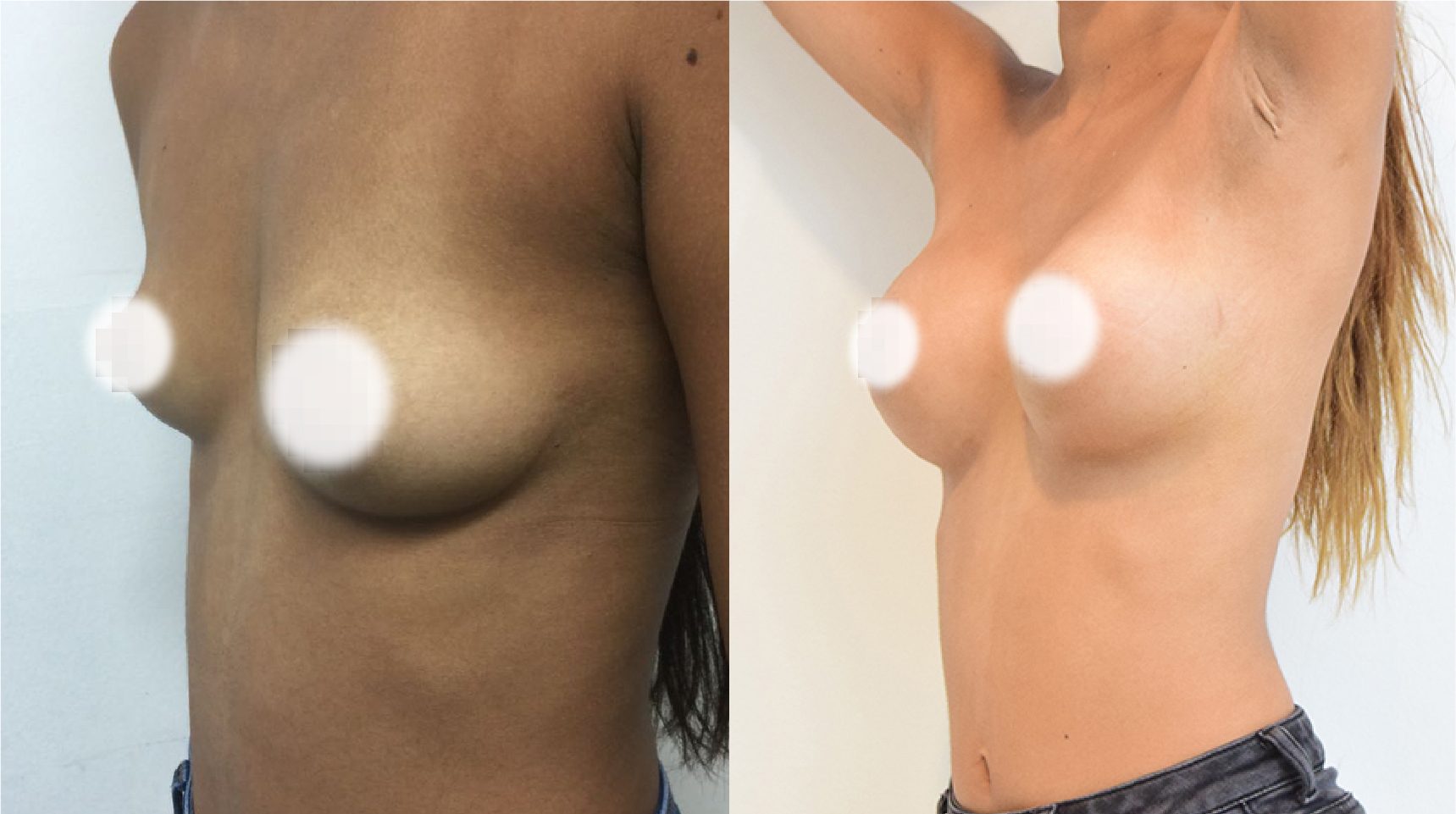
WHAT DOES THIS SURGERY CONSIST OF?
The increase in breast size is effected through the use of prosthesis, never through the injection of substances.
Many are the women who, by genetic constitution, loss or weight gain of after a pregnancy, have breasts that do not have the volume or turgidity they would like. With a breast augmentation we can restore harmony to the body shape
Several factors are taken into consideration:
• Placement of the implant: under the muscle, fascia or grand.
• Type of implant: anatomical (drop shape) of different projection and height, or round of different shape.
• What the patient want
Breast implants are pockets or containers made of silicone in their wall or shell and filled with silicone or saline solution (physiological serum). In Colombia, silicone gel containers are used more frequently because they give a texture closer to the natural one. There are also prostheses with smooth, textured or polyurethane coated surfaces.
There are several methods of prosthesis placement. These can be place by approach:
- Peri-areolar, through the lower edge of the areola.
- Inframammary, through which the incision is located in the lower fold of the breast.
- Axillary, in which the prosthesis is inserted through the armpit fold.
- The periumbilical approach is described but requires inflatable prostheses in saline solution.
The plane of placement of the prosthesis can be:
- Retro glandular, exactly behind the mammary gland.
- Retro fascial, behind the gland but wrap the envelope of the muscle called fascia.
- Retro pectoral or sub muscular, behind the pectoral muscle.
The surgery least approximately one to two hours and depending on the case of each patient can performed with:
- Local Anesthesia and Pharmacological sedation.
- General Anesthesia.
The specialist will ask you about your important medical history and will assess your breasts to explain the options available and allow your choice as to surgical approach, size and desired shape.
If your breasts are very sagging, you may be offered the option of lifting them (see Mastopexy). It is very important that you discuss all the expectations you have with your doctor, he will guide you about the best option, alternatives, limitation, risks and care you should have
If you smoke, use drugs such as aspirin, anti-inflammatory drugs, vitamin E, corticosteroids, or have spontaneous or prolonged bleeding, tell your plastic surgeon. It is important to avoid complications during surgery. You should also comment if you have had urological problems such as urinary tract infections because these can affect the prosthesis.
Once the inflammation and the remains of hematomas have disappeared, if these appear, the breast will have a normal appearance about six or eight days. One month later the entire inflammatory process will have been resolved, however, the global evolution, until achieving definitive stabilization, is considered to be about six months.
The next day you will feel tired and experience pain, which is controlled with the medication prescribed for you by your plastic surgeon. You will be able to resume most of your activities on the 3rd day of surgery.
You must wear a flannel brassiere 24 hours a day for 1 month to give the best modeling to your breasts while they heal internally; this will also limit pain. Most of the sutures are internal and do not require the extraction of the same, thus giving more comfort to the patient.
The use of swimming pool should be avoided the first 2 weeks because it promotes infection. Sport and other physical exercise activities can be done again around 3, 4 weeks after surgery. You may have decreased sensitivity or tingling in the breasts but this, in a couple of weeks, has to return to normal.
The scar will be hard and reddish for the first 6 weeks, but then with the indicated care you will return to the same structure of the skin of the areola.
What are the best breast prostheses?
At 19.80 we recommend the latest generation of cohesive silicone gel prostheses, as the risk of rupture or leakage is minimal and a very natural result is achieved, unlike those of saline serum. There are smooth, rough, round, drop-shaped prostheses… in other words, there are different models to choose from. The final decision will depend on the surgeon’s advice and the patient’s preferences.
Are prostheses harmful to health? Can they cause breast cancer?
Many studies have been carried out and none of them have shown that prostheses, whether they are made of serum or silicone, produce any type of disease. As for the relationship between breast cancer and prostheses, the situation is the same. Silicone prostheses have been used for more than 50 years and different studies have not shown that there is a higher incidence of breast cancer or other tumour or autoimmune diseases in women who have undergone an intervention with prostheses. In fact, this type of prosthesis is used all over the world for post-mastectomy breast reconstruction. In any case, women with severe immunological diseases are advised to rule out this type of intervention.
Can I have a breast augmentation if there is a family history of breast cancer?
All women with a family history of breast cancer should monitor their health more closely, but the use of prostheses will not trigger the appearance of a tumor.
Can a baby be breastfed with breast implants?
Initially there will be no problems with breastfeeding after a breast augmentation. There are other interventions such as maxtopexy or breast reduction in which breastfeeding may be altered. In any case, the patient should consult with the surgeon before making a decision.
How often should silicone prostheses be changed?
Initially, breast prostheses are for life. They should only be replaced in the event of breakage, leakage or excessive wear.
Can leakage, rupture or wear of an implant cause serious health risks?
When the implant is made of silicone, the only alteration in these cases is what in medicine is called siliconoma, that is, a fibrous reaction around the material that has come out. Although today with cohesive gel prostheses are avoided leaks and problems arising from them.
It is necessary to remove the implant to prevent the area from becoming inflamed or hard and replace the prosthesis. If the prosthesis is made of saline, the body reabsorbs the liquid without problems, but it must be replaced because the visual effect is important.





